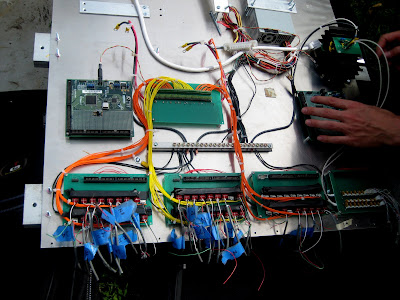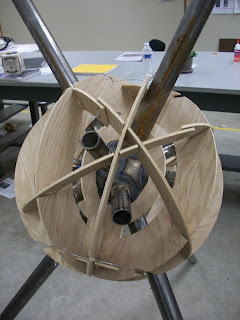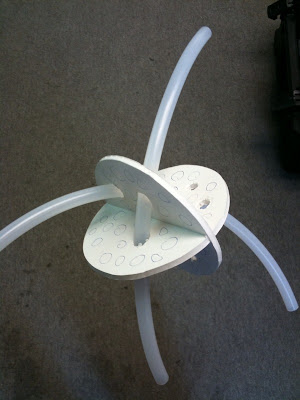


interactive architecture exhibit. A large networked structure with a light steel frame inside wrapped tight with fabric to give the 3-D volumes. When someone is close to one of the legs it shoots lights from that person to another person there in 3-d through the structure. In other words it will constantly have these shooting lights moving throughout it. It becomes like a large 3-d neural network







